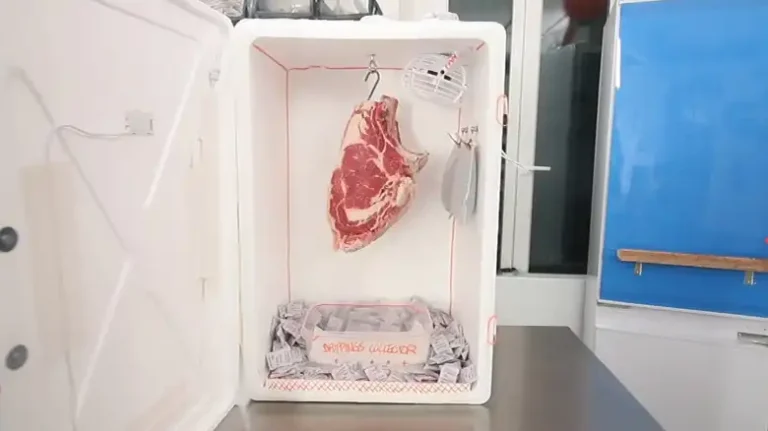[Explained] Is a Fridge Colder When Full or Empty?
Have you ever wondered if a full or empty refrigerator is colder? The short answer is a full fridge is commonly colder than an empty one. And this is because when the fridge is complete, there is much less air area to cool, so the compressor does not have to work as challenging to keep a cool temperature. This article will explain the science of refrigerators, how their cooling systems function, and how your refrigerator’s contents may alter the appliance’s temperature and energy efficiency.

Does a Fridge Work Better Full or Empty?
First, it’s essential to understand how fridges function. They use a compressor to flow into refrigerant through coils, which eliminates warmth from the fridge’s air. The cold air then circulates back into the fridge to maintain the temperature low.
When you open your refrigerator’s door, warm air from the outside combines with the cold air within the refrigerator. And this reasons the temperature inside the fridge to rise, and the compressor has to work more challenging to carry it back to the favored temperature.
The compressor takes much less time to elevate the temperature again when a fridge is empty since there is an extra area for the warm air to circulate. However, when a fridge is full, the indoor items take in the warm air that enters the fridge, which helps to preserve the extra temperature stable.
Experts claim that a full fridge uses much less energy than an empty one. This is so that the compressor does not have to work as hard to keep a cold temperature when the fridge is full because there is less air space to chill.
However, it’s necessary to note that you should keep your fridge manageable, as this can prevent air from circulating efficaciously and lead to uneven cooling. It’s also critical to maintaining your fridge organized and ensuring enough space between items to permit perfect airflow.
Why Does the Amount of Items in a Fridge Affect its Temperature?
The amount of items in a fridge affects its temperature because the items inside help to trap the cold air. A full fridge maintains its temperature better than an empty one because the items act as a barrier, preventing warm air from entering the fridge.
Frequently Asked Questions And Answers
Can a Full Fridge Lead to Poor Airflow and Temperature Fluctuations?
Yes, filling a fridge to its maximum capacity can purpose airflow problems and make it hard for the fridge to preserve a consistent temperature. Overcrowding a fridge can lead to poor circulation of cool air, making certain areas of the fridge colder than others.
What is the Ideal Capacity for a Fridge?
The ideal capacity for a fridge depends on your specific needs and household size. However, as a general rule, it is best to maintain your fridge at a reasonable potential and ensure that the door is suitably sealed to preserve cold air from escaping.
How Does an Empty Fridge Affect its Cooling Performance?
An empty fridge has more space for warm air to circulate, leading to temperature fluctuations. This means that an empty fridge has to work harder to keep a consistent temperature, leading to increased energy consumption and higher electricity bills.
Conclusion
In conclusion, the amount of items in a fridge affects its overall temperature. A full fridge tends to be colder than an empty one because the items inside help to trap the cold air. However, ensuring that the fridge is now not overcrowded is essential, as this can lead to bad cool air circulation and temperature fluctuations.
Proper use and maintenance are also key factors in keeping your food fresh and safe. So, maintain your fridge at a reasonable capacity, and make sure that the door is correctly sealed to maintain cold air from escaping. Doing so allows you to enjoy a perfectly chilled fridge and simultaneously reduce energy bills.




![[Explained] Is R134a Refrigerant Flammable?](https://www.dominatekitchen.com/wp-content/uploads/2023/02/Is-R134a-Refrigerant-Flammable-768x431.webp)

